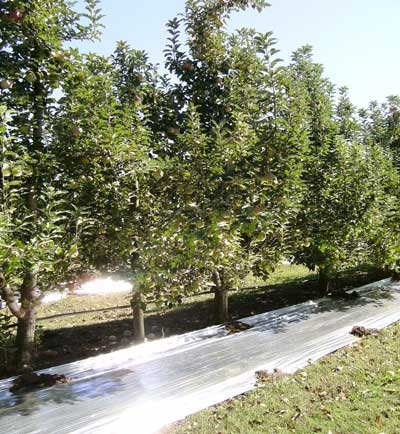Whether we like it or not, the trend among consumers is to buy fruit based largely on appearance.
Given a choice: fruit with minimal red colour versus one that’s primarily red, the average consumer would probably pick the red one. Why?
Maybe it is a misconception that redder means better quality. Either way, for fruit to sell it needs to meet the buyers specifications and expectations.
Principles
Light availability is critical to producing quality fruit. Light is the driving force for photosynthesis which provides energy for fruit development and sugar accumulation.
Light is also essential for the production of anthocyanin pigments that result in red/purple skin colour of fruits (e.g. apples, peaches, cherries, plums, grapes). These two facts become evident in different portions of the canopy.
Fruit that are well exposed to the sun are usually redder, larger and have higher sugar content than those that are shaded.
Light is also important for the production of flower buds for next year’s crop.
Efforts to improve light penetration into the canopy often ensure greater ‘fruitfulness’ in parts of the canopy that will otherwise be too shaded for good fruitwood production.
Reflective film
Reports dating from the mid 1970s have documented improvements in skin colour and sugar content of apples and nectarines when a reflective film is laid on the orchard floor during the fruit ripening phase.
The principle is quite simple—the metallized surface of the film operates as a sunlight reflector.
To look at the product, it resembles aluminium foil. However, it is a polyethylene film to which aluminium particles have been attached.
As the sun passes through the sky from dawn to dusk, light hitting the surface of the film is reflected into the tree canopy. Fruit in the lower and interior part of the canopy benefit substantially because they are normally in the shade. Fruit in the periphery of the canopy also benefit.
The film does not alter the quality of light that it reflects. It reflects both visible and invisible radiation.
For information see Tree Fruit January 2013






















